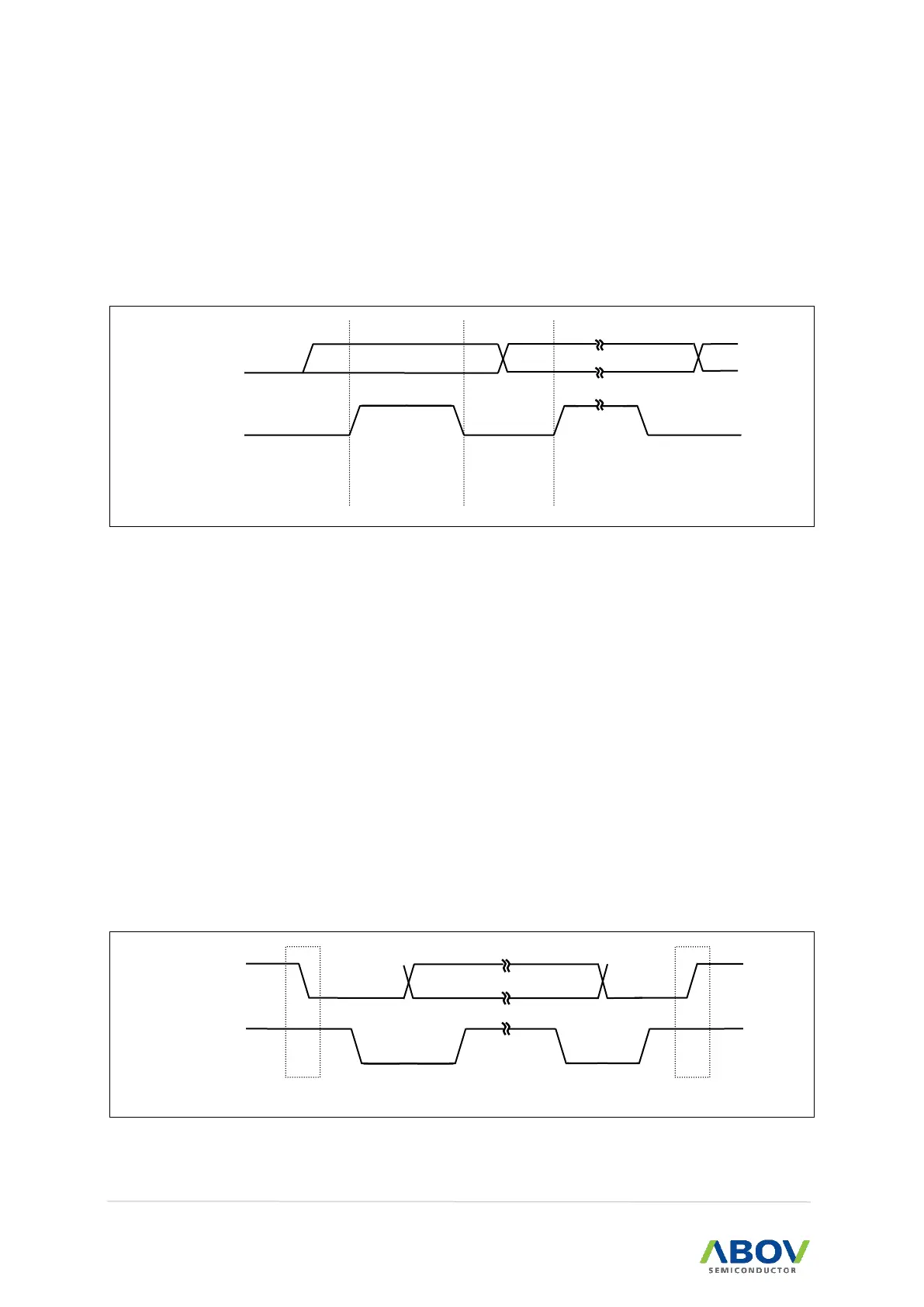14.2 Bit transfer
Data on the SDA line must be stable during HIGH period of the clock, SCL. The HIGH or LOW state
of the data line can only change when the clock signal on the SCL line is LOW. The exceptions are
START(S), repeated START (Sr) and STOP (P) condition where data line changes when clock line is
high.
Figure 63. Bit Transfer on the I2C-Bus
14.3 Start/ repeated start/ stop
One master can issue a START (S) condition to notice other devices connected to the SCL, SDA
lines that it will use the bus. A STOP (P) condition is generated by the master to release the bus lines
so that other devices can use it.
A high to low transition on the SDA line while SCL is high defines a START (S) condition.
A low to high transition on the SDA line while SCL is high defines a STOP (P) condition.
START and STOP conditions are always generated by the master. The bus is considered to be busy
after START condition. The bus is considered to be free again after STOP condition, i.e., the bus is
busy between START and STOP condition. If a repeated START condition (Sr) is generated instead
of STOP condition, the bus stays busy. So, the START and repeated START conditions are
functionally identical.
